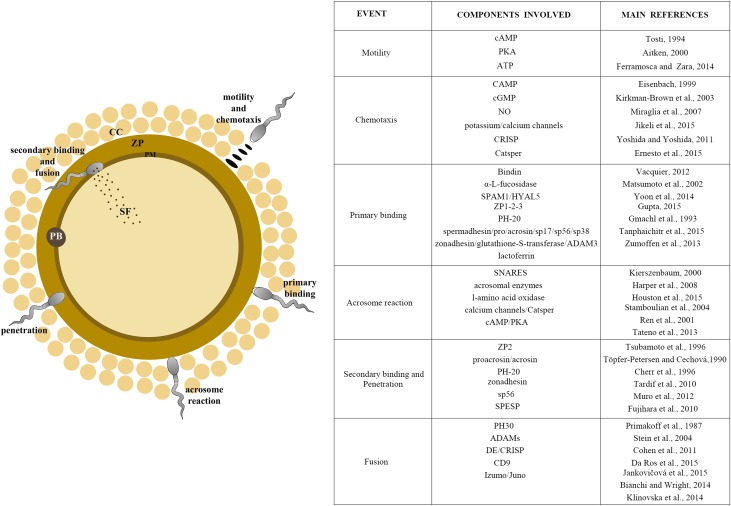Figure 1.
Oocyte-induced sperm activation.
Left panel: image representing the events occurring during oocyte-induced sperm activation: initially, chemical signals from the oocyte extracellular membranes rescue sperm from a quiescent state by triggering motility and attracting the sperm toward the oocyte itself. The primary binding, which occurs between ligands and receptors present on their external sides, induces the AR, which renders the sperm plasma membrane highly fusible. This event allows penetration through the ZP and triggers fusion of the two PM. Upon fusion, sperm start to release the SF into the oocyte cytoplasm. Right panel: table reporting the event, the components involved and relevant references. PM, plasma membrane; ZP, zona pellucida; CC, cumulus cells; SF, sperm factor; PB, polar body; cAMP, 3′-,5′-cyclic adenosine monophosphate; PKA, protein kinase A; cGMP, cyclic guanosine monophosphate; NO, nitric oxide; CRISP, cysteine-rich secretory protein; SPAM1 and HYAL5, hyaluronidases; PH-20, glycosylphosphatidylinositol-anchored protein; ADAM3, metalloproteinases; SNARES, soluble NSF-attachment protein receptors; SPESP, sperm equatorial segment protein; PH-30, fertilin; DE, epididymal protein; CD9, member of the tetraspanins protein family; AR, acrosome reaction; sp, sperm surface protein.

